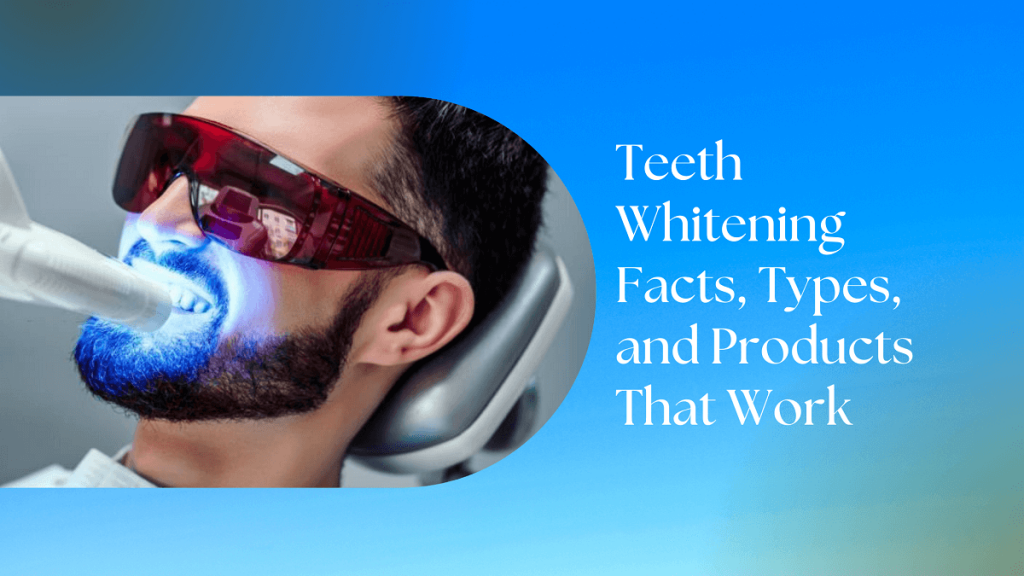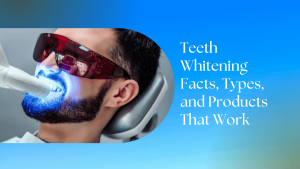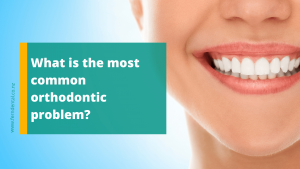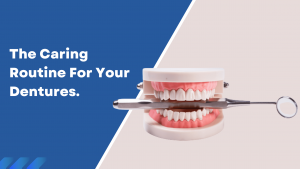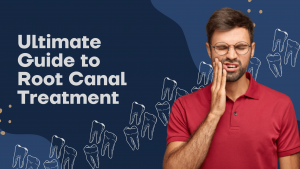Who doesn’t love a sparkling, pearl-white smile? Everyone would love to have one, making teeth whitening facts one of the most popular dental treatments. Every year billions of dollars are spent in order to keep their smiles looking bright.
Teeth discoloration is caused by a number of factors, including coffee, red wine, cigarettes, age, and some drugs, such as tetracycline. There are several choices for those who want to spruce up the appearance of their smiles. This particular blog will assist you to choose the right teeth whitener.
How does Teeth Whitening Work?
Tooth whitening is referred to as any method that might make your teeth appear whiter. There are two ways through which teeth whitening is carried out generally, using bleaching and non-bleaching whitening agents. The terms whitening and bleaching are sometimes used interchangeably, but the U.S. Food and Drug Administration (FDA) strictly prohibits using the phrase “bleaching” unless the product really includes bleach. When a product cleans the teeth of dirt and food without the use of bleach, we call it a “whitening” product.
Bleaching chemicals, which include peroxide (hydrogen peroxide or carbamide peroxide), may lighten teeth even farther than their normal hue by removing both surface and deep stains.
What constitutes Bleaching Products?
Peroxide is the key component in teeth whiteners sold by dentists and in drugstores (hydrogen or carbamide). Carbamide peroxide decomposes into hydrogen peroxide, which is the active bleaching agent.
Dentist-dispensed bleaching products are far more potent than those sold in stores. Dentist-dispensed whiteners may include as much as 45% peroxide, whereas over-the-counter whiteners like whitening strips and trays often contain just 7% peroxide. Glycerin, carbopol, sodium hydroxide, and flavorings are some of the other components of both dentist-prescribed and over-the-counter whiteners.
Whitening is best left to the dentist
If you want to bleach your teeth, the American Dental Association (ADA) advises you to talk to your dentist first. Get your teeth whitened the right way by the dentist, who can recommend and monitor the most effective methods.
Professional whitening may be done at a dentist’s office in about an hour. During the process, a tooth whitening gel containing 25% to 40% hydrogen peroxide is applied, and then a specific heating lamp is directed at the teeth for three 20-minute periods, with the gel being reapplied in between each session. A laser is an option for certain dentists since it is said to speed up or kick-start the whitening process. In order to keep the whitening gel on your teeth and not on your lips, gums, or tongue, a protective barrier is worn throughout the whitening process. The dentist will often provide you with custom whitening trays to use with take-home bleaching solutions for maximum effectiveness. The light treatment portion of a professional teeth whitening procedure may cost up to $500, while the custom trays themselves often cost between $300 and $400.
Whitening At Home
Over-the-counter teeth whitening products have grown popular as they are affordable and simple to use. They contain smaller levels of peroxide than the whitening treatments used by dentists, yet some individuals may have decent results though it will take a longer time. OTC whitening kits and products include whitening trays, strips, rinses, and toothpaste. Prices range from $25 to $100.
The American Dental Association still advises dentist-supervised whitening as being the safest for your tooth enamel. The products used by dentists are also more successful in getting rid of severe stains. If you do want to buy whitening goods at the pharmacy, search for the American Dental Academy mark of approval. The ADA mark signifies items are held to a higher level than needed by law, and they have been examined and are deemed to be safe and effective.
Am I a Candidate for Whitening?
Teeth whitening is safe for the vast majority of people and works best on those with moderate staining. However, not all stains can be removed with whitening treatments, and some dental and medical conditions can decrease the effectiveness of whitening procedures. Among them are:
- Front teeth restoration using porcelain veneers, dental crowns, caps, white fillings, or dental bonding. Whitening agents have no effect on these synthetic materials. You may need new crowns or veneers if you want these teeth to seem whiter.
- While bleaching can effectively lighten yellow teeth, it may have less success lightening brown teeth. Teeth with grey tones, white patches, or discoloration from a “dead” tooth may not bleach at all.
- Tooth whitening might exacerbate several health issues. Patients with sensitive teeth, enamel wear, bruxism (teeth grinding), or temporomandibular joint disease (TMJ/TMD) are all examples. In certain situations, these problems may be amenable to in-office whitening treatments. Please see a dentist.
- Tooth whitening is not effective if the dental discoloration is caused by drugs or a tooth injury.
Research Indicates: This Is the Best Approach
The easiest and safest approach to whitening teeth is to have a dentist do it for you in their clinic. The dentist may adjust the concentration of the bleaching chemical to suit your needs, and even when stronger agents are employed, the mouth and gums are still protected. In addition, a dentist can deal with any after-treatment tooth discomfort or other problems. In only one hour, you may whiten your teeth by up to ten shades!
The second best is a dentist-supervised at-home bleaching solution that involves using custom-fitted tooth trays. The bleaching chemical is typically used for two weeks, for around eight hours every night, and includes about 10% carbamide peroxide.

